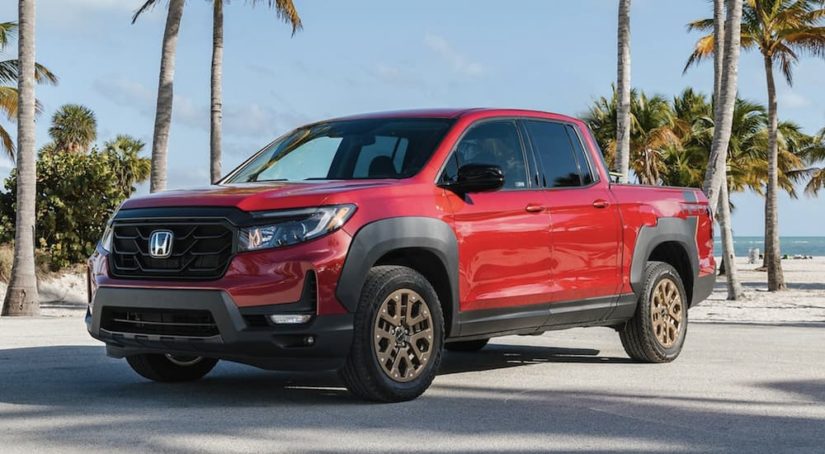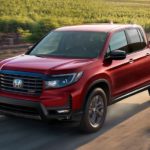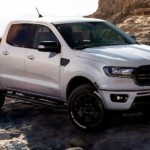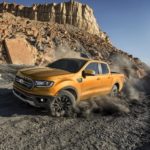Midsize trucks are often overshadowed by their larger, full-size siblings. However, a few models prove to be the exception to the rule and demand your attention. Comparing the 2022 Honda Ridgeline vs 2022 Ford Ranger reveals two such models that deserve their place in the spotlight. These midsize marvels are impressive workhorses that blend capability with innovation, luxury, and affordability—making it difficult to choose between these two best-selling models. So which truck is better suited for you?
The Ridgeline and Ranger may share the segment and the spotlight, but the models are vastly different and ultimately sit on opposite ends of the midsize truck spectrum. Their builds and purposes are unique; where one shines, the other struggles, and vice versa. For example, the Ridgeline’s unibody platform distinguishes it in the segment and gives it an edge over the competition in ways that might surprise you. So, what can you expect from these trucks? It’s time to find out.
Unibody vs. Body-on-Frame: What’s the Difference?
How do you define a truck? Like the 2022 Ford Ranger, most trucks are built using a body-on-frame platform. However, Honda sent shockwaves through the segment in 2006 with the debut of the first-generation Ridgeline, which defied tradition with its unibody platform. Today, the 2022 Ridgeline remains true to its roots, with its unibody design providing a stark contrast to the Ford Ranger—ultimately drawing the proverbial line in the sand.
So, what exactly is the difference between a body-on-frame and a unibody platform? Think about the role your spine plays in your body and its movement. The Ranger’s frame or chassis acts as its spine, serving as the framework on which the truck’s body is attached. By separating this construction, trucks like the Ranger benefit from a higher ground clearance, improved off-road capability, and greater towing capacity.
With most crossovers and SUVs relying on a unibody design, the Ridgeline’s unibody construction was a shock. The unibody design is precisely as its name implies; it’s a single body design where the chassis and body are manufactured as one unit. This unibody design offers many advantages, such as improved safety, increased cabin volume, and better ride quality.
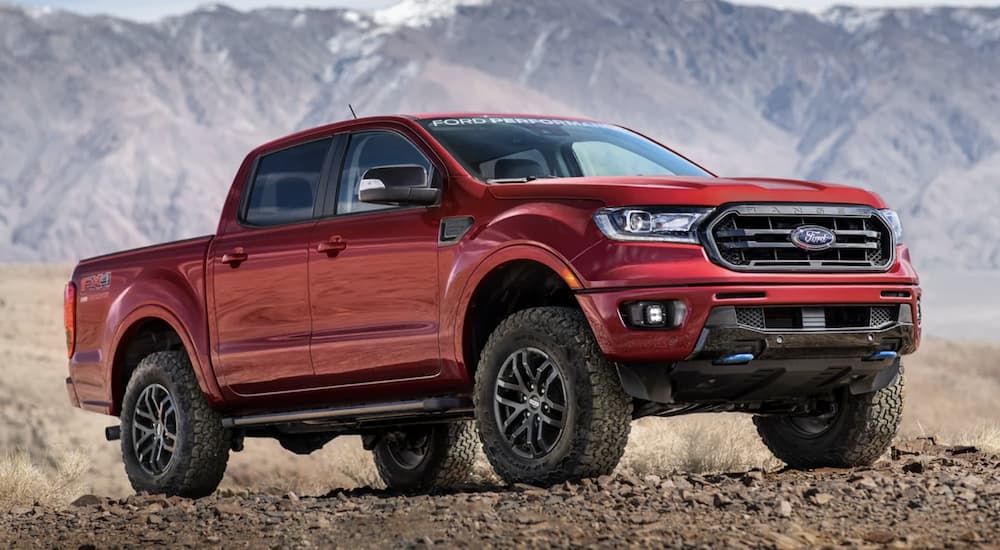
Pros and Cons: It’s All About Perspective
The 2022 Ridgeline’s unibody construction makes it more versatile in ways the 2022 Ranger isn’t—and vice versa. For example, the Ridgeline blends the best features of a crossover and midsize truck, a feat that earned it a coveted place on Car and Driver’s Editor’s Choice list. Honda takes these features and delivers them in a sophisticated package that’s efficient, spacious, and functional. Think of the Ridgeline as an SUV with a truck bed.
Handling and Capability
The Ridgeline’s unibody construction dramatically affects every aspect of its design and function. First, it makes the chassis stiffer, which translates to improved handling and ride quality. Second, Honda’s use of an independent rear suspension further improves this handling, while the standard all-wheel-drive system maximizes the Ridgeline’s traction in slippery conditions. The result is a truck that performs exceptionally well on the pavement.
However, the Ridgeline’s unibody construction has its downfalls, giving the 2022 Ranger a significant advantage in a few key areas. For example, the Ranger’s body-on-frame platform makes it a truck in the traditional sense. It guarantees its ability to haul heavy loads without breaking a sweat and the confidence to explore technical terrain. It isn’t that the Ridgeline can’t tow a trailer or venture off the pavement; it just won’t perform as well as the Ranger, with its 7,500-lbs towing capacity and 1,905-lbs payload compared to the Ridgeline at 5,000 lbs and 1,583 lbs, respectively.
What does this mean for you? If you’re someone who sticks to the pavement and doesn’t haul heavy loads, the Ridgeline is an outstanding option with its SUV-like handling and modest capability. However, if you’re looking for a truck that can confidently venture off the beaten path and haul the family camper, the Ranger is more practical.
Passenger and Cargo Space
Beyond handling, the Ridgeline’s unibody platform makes way for more functional design features and a larger cabin. The Ridgeline offers 108.9 cu.ft. of passenger space, which translates to ample head, leg, and shoulder room in the front and rear. For example, passengers in the front row have 39.5” of head room and 40.9” of legroom, while second-row passengers have 38.8” and 36.7”, respectively. In contrast, the Ranger’s body-on-frame platform limits the size of the cabin, giving second-row passengers only 35.9” of head room and 30.4” of legroom.
While your passengers will have more room in the Ridgeline, you’ll also find Honda’s popular truck offers more versatility and function when it’s time to haul cargo. The Ridgeline’s truck bed is significantly impacted by its unibody construction. Although the bed is shorter than even the Ranger’s small, 5’5″ bed, the Ridgeline makes up for its limited length with a broader depth—to give you plenty of room for bulkier cargo. In addition, Honda extends the Ridgeline’s cargo-hauling capacity with a lockable in-bed trunk, a lay-flat truck bed, and a dual-action tailgate.
The Ranger’s body-on-frame platform limits what you can do with the truck bed. So, instead of finding a lockable in-bed trunk or a lay-flat truck bed, you’ll find the traditional bed that’s standard on every other truck in the segment. So, how will this impact your decision? That depends on your passenger and cargo needs.
Suppose you’re looking for a truck to accommodate your small family or keep your passengers comfortable in the second row, while also offering versatile cargo storage. In that case, the 2022 Ridgeline checks all the boxes. The downside to this, as mentioned, is that this spaciousness and versatility limit the Ridgeline’s towing capacity. In contrast, the Ranger is ideal for drivers who don’t necessarily prioritize cabin size or passenger volume, focusing more on driver comfort and towing capability. The exchange is a truck with a traditional bed and a smaller cabin, but one that can venture off the pavement and tow heavier loads.
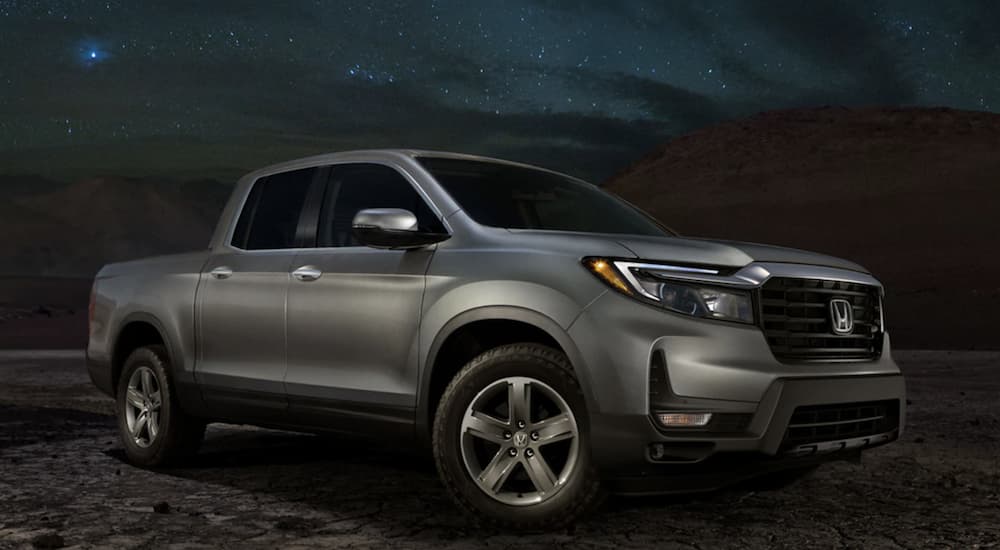
Which Truck Will You Choose?
You might have started your search for the 2022 Honda Ridgeline and 2022 Ford Ranger thinking that these trucks share many similarities. After all, they’re both staples in the midsize segment. However, closer inspection proves that the Ridgeline and Ranger are vastly different road warriors that meet different needs and expectations.
The 2022 Ranger lives up to Ford’s “Built Ford Tough” slogan as a powerful workhorse built on a traditional body-on-frame platform. For the Ranger, sticking with tradition proves beneficial and results in a truck that’s capable of hauling heavy weight and exploring roads less traveled. The cost of this capability comes in the form of spaciousness, handling, and functional storage features.
There’s a rule breaker in every crowd, and in the midsize truck segment, that honor goes to the rebellious Ridgeline. Defying tradition, the Ridgeline’s unibody construction makes it the most unique truck in the segment. As a result, the Ridgeline makes slight sacrifices in capability on and off the trails—yet it delivers the ride quality and handling of a luxury SUV. For many, that’s not a hard sacrifice to make, especially among those who like to break the rules themselves.
